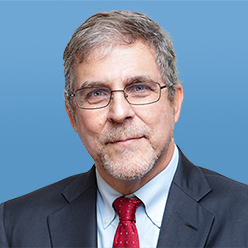A humanitarian mission in Ukraine? What a great idea.
Russia’s ambassador to the United Nations recently drafted, circulated, then abruptly pulled a draft resolution calling for humanitarian intervention in Ukraine against an unspecified threat. The resolution called for protecting civilians "in vulnerable situations" and providing safe passage for humanitarian aid workers.
It is puzzling the Kremlin chose to pull back this resolution, as it is the one good foreign policy idea Vladimir Putin's regime has had in recent decades. But if Russia is too timid to follow through, the rest of the world can take up the challenge.
Let's start with facilitating an influx of humanitarian workers into Ukraine to forward deploy refugee assistance. The U.N. High Commissioner for Refugees estimates the number of Ukrainian refugees now tops 2.5 million. Stabilizing the situation inside Ukraine is surely better than having refugees flooding into Poland and elsewhere in Europe.
This effort could initially be centered on the western Ukrainian city of Lviv, which would be declared an internationally recognized haven. This safe zone would then expand outward to other cities following a regular timetable. Russia’s proposed humanitarian pauses could be implemented to allow people to move to the safe havens securely. Once inside the safety zone, refugees would be given food, shelter, and medical attention from the international community.
Next, attention would turn to special areas of humanitarian concern like the capital, Kyiv, where for some reason, buildings keep blowing up, indiscriminately taking the lives of men, women, and children. Perhaps Russia knows why this is happening, but if so, it isn't telling. In any case, aid could be flown into Kyiv and other threatened Ukrainian cities through secure air corridors, Berlin Airlift-style. This would guarantee freedom of movement for aid-givers who would require unencumbered access to all parts of Ukraine.
The humanitarian operation would be conducted fully within the internationally recognized Principles and Good Practice of Humanitarian Donorship. These include acting with impartiality, neutrality, freedom from political considerations, and above all humanity — respecting the dignity and rights of all. Surely Moscow can get behind that concept, right?
In a complex humanitarian operation of this size and scope, there must be a robust security component. The expanding safe zone would thus be secured by an international armed force, a coalition of the willing acting under an ad hoc alliance structure formulated specifically to deal with this humanitarian emergency. It must be stressed this deployment is not an act of war. Perhaps call it a "special military operation."
The military forces securing the humanitarian operation would be tasked with missions such as securing the expanding perimeter of the safety zone, safeguarding Ukraine’s airspace, escorting the humanitarian flights into Ukrainian cities, providing security assistance to Ukraine’s government, and engaging in the full spectrum of military support for humanitarian operations.
In time, the safe zone would expand to encompass the entire country. This would stem the humanitarian crisis and allow refugees to begin to return to their homes. The international community could then assist with the rebuilding stage and reconstituting Ukrainian government control.
For the time being, though, it's safe to say the Russian idea is a great one. We should thank them for it — and waste no time putting it into practice.
